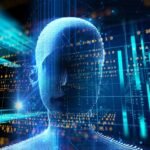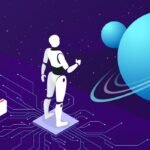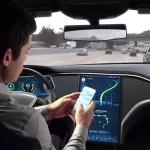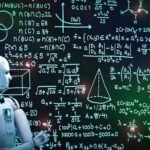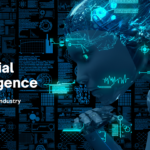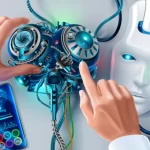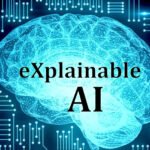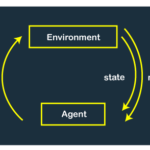AI and Virtual Reality: The synergy between AI and virtual reality technologies.
Artificial Intelligence (AI) and Virtual Reality (VR) are two groundbreaking technologies that have reshaped various industries independently. However, when combined, they create a powerful synergy that amplifies the potential for immersive experiences and transformative applications. This seamless integration of AI and VR is driving innovation across multiple sectors, from entertainment and gaming to education, healthcare, and beyond. In this blog, we explore the exciting synergy between AI and virtual reality and its impact on shaping the future of interactive technologies.
- Enhancing Immersion and Realism
Virtual Reality already immerses users in digital worlds, creating a sense of presence and interaction. AI adds a new layer of realism by enabling dynamic and adaptive environments. AI algorithms can respond to user behavior, adjusting the virtual experience based on preferences, actions, and emotions. This synergy enhances immersion, making the virtual world feel more lifelike and responsive.
- Personalized Experiences
AI-powered personalization is revolutionizing the way we experience virtual reality. By analyzing user data and preferences, AI algorithms can customize VR content, tailoring the experience to individual interests. Whether it’s personalized gaming scenarios, educational content, or virtual training, AI ensures that users get the most relevant and engaging experience possible.
- Real-Time Interactions
AI plays a crucial role in enabling real-time interactions within virtual reality environments. Natural Language Processing (NLP) and speech recognition technologies empower users to communicate with virtual characters and objects, making the experience more interactive and dynamic. This fosters a sense of agency and realism, as users can engage in conversations and manipulate virtual elements using natural gestures and commands.
- Adaptive Learning and Training
The combination of AI and VR holds great potential for adaptive learning and training applications. AI algorithms can track a user’s performance, identify areas of strengths and weaknesses, and adjust the difficulty level accordingly. This personalized learning approach benefits education, professional training, and skill development, allowing users to learn at their pace and efficiently acquire new knowledge.
- AI-Powered NPCs and Characters
AI-driven NPCs (Non-Player Characters) and virtual characters are becoming increasingly sophisticated. AI enables virtual characters to exhibit more natural behaviors, learn from interactions, and respond intelligently to users’ actions. This results in more engaging and believable interactions within VR environments, enhancing storytelling and user engagement.
- Healthcare and Therapy
AI and VR are transforming healthcare by offering innovative solutions for patient care and therapy. Virtual Reality can create safe and controlled environments for exposure therapy and rehabilitation. AI algorithms can analyze patient data, personalize treatment plans, and provide real-time feedback during therapy sessions. Together, AI and VR are empowering medical professionals to deliver more effective and patient-centric care.
- Simulations and Predictive Modeling
The synergy between AI and VR is revolutionizing simulations and predictive modeling. Complex scenarios, such as architectural designs, urban planning, and disaster response simulations, can be conducted more accurately and cost-effectively within virtual environments. AI-powered simulations enable users to explore various scenarios and make data-driven decisions, leading to more informed outcomes in real-world applications.


















